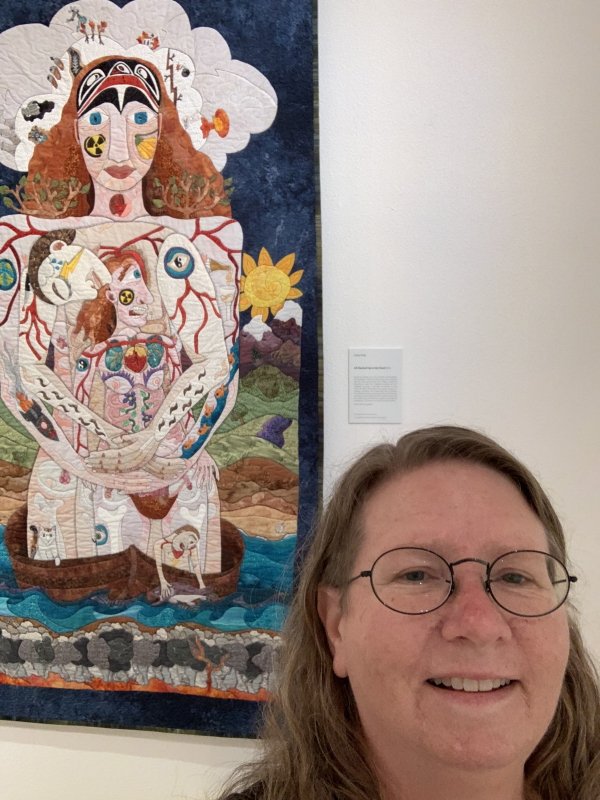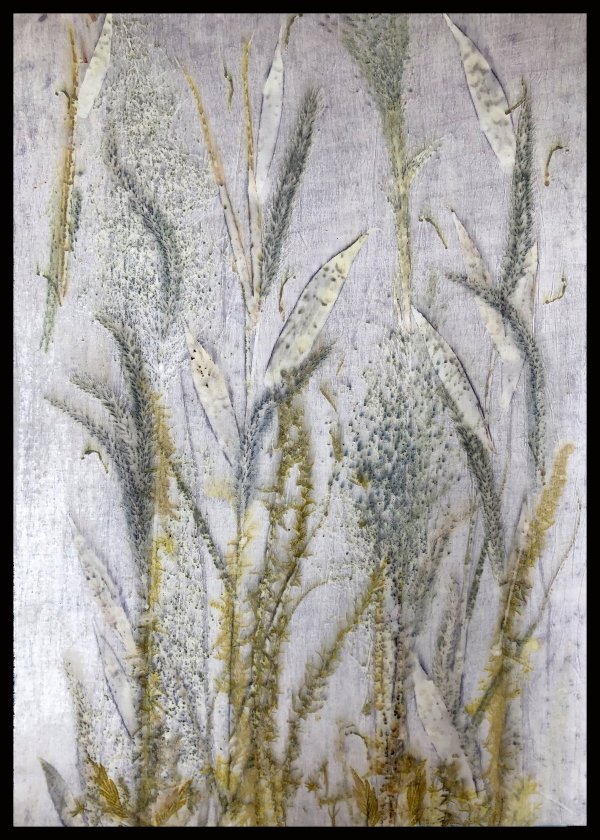Well here it is…with some of the artists and all the work.
On Saturday, June 25, some of the artists were at the exhibit to talk to viewers and show their techniques. Here they are with Charlotte Bird’s piece Southland Odyssey, a large folding book of California landscapes.
Artists (l-r) Kathy Nida, Polly Jacobs Giacchina, Charlotte Bird, Rebecca Smith, Peggy Wiedemann, and Olivia Batchelder.
Here’s Charlotte Bird with one side of the piece…
And the other side here…
Bird also had some of her Microbes pieces in the exhibit.
Polly Jacobs Giacchina was kept busy explaining her techniques to viewers. This is her piece Burst from Inside.
And Microscopic View.
Peggy Wiedemann explained to visitors how she works with pine needles…
Here she is with one of her pieces, Carnival.
Here is her piece Batteries Not Included.
This is Wiedemann’s Shake It Up…
Olivia Batchelder with her pieces Multiple Horizons with Fragility (l) and Multiple Horizons with Condor (r).
Rebecca Smith with her tapestry Flight.
And her piece Memory Tree.
Kathy Nida cut out tiny pieces for her next quilt…
Here she is with her piece All Stacked Up.
And Hold On.
The exhibit had a wide range of techniques shown, from quilting, to weaving, to knotting, to coiling, to wrapping, to dyeing, to printmaking.
Starting with weaving, here is Michael Rohde’s Casa de Tia Guero.
This is Rohde’s piece Etla.
Cameron Taylor-Brown also uses weaving techniques in her work. This is Manhattan Bridge.
And here is Shoreline.
Debby Weiss works with fabric and stitching. This is her piece Fractured.
Also working in fabric is Linda Anderson, who paints her images, constructs the quilt, and then intensely quilts it. This is Unbroken.
And here is Perceptions of Life.
In the category of ecoprinting is Doshi’s work. This is California Wild.
Here is Late Summer Secret.
Working with fabric and found objects is Brecia Kralovic-Logan. This is her piece She Invited the Moon.
Lydia Tjioe Hall also works with objects; in this case, the absence of those objects helps create the image. This is Mirage (l) and Liminal Dwelling (r).
Carrie Burckle’s piece Twizzle, created from printed fabrics, hung in the center of the exhibit.
Here are a couple of full views of the exhibit.
And a view of the hands-on samples artists provided to help understand how they made their work.
Plus a last view of the artists who were available on the Artist Talk day.
Hope you enjoyed the show. Keep your eyes peeled for the next show, coming up in late 2022 at the Cannon Gallery in Carlsbad, California.














































